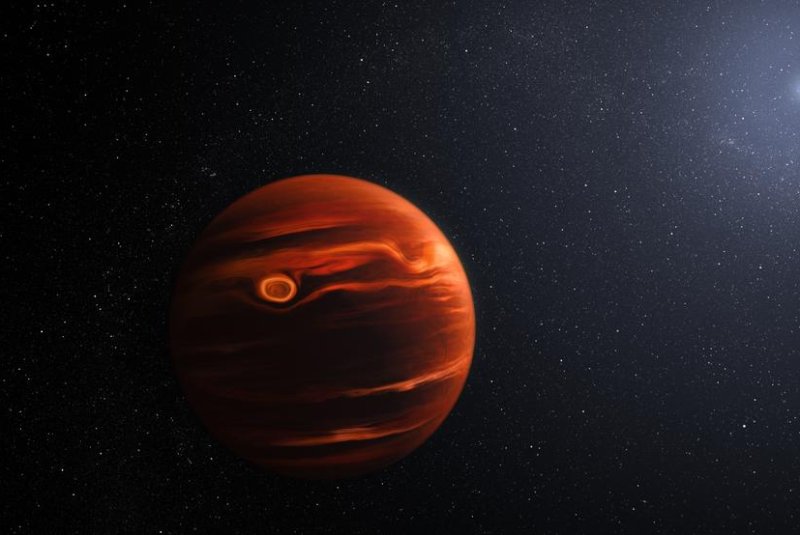Researchers using data collected by NASA's James Webb Space Telescope have detected signs of silicate clouds, methane, carbon monoxide, water, and carbon dioxide in the atmosphere of a distant planet known as VHS 1256 b. Artist's rendering by Jospeh Olmsted NASA/
Press Release
March 23 (UPI) -- Researchers using data from NASA's James Webb telescope have observed silicate clouds, water, methane, and carbon dioxide in the atmosphere of a distant planet.
The discovery is the most number of different molecules ever seen collected on one planet outside of our solar system, scientists say.
Researchers lead by the University of Arizona's Brittany Miles studied spectra data from a planet known as VHS 1256 b, which is about 40 light years from Earth.
The data was collected using the Webb's Near-Infrared Spectrograph and Mid-Infrared Instrument and published in a research paper in the Astrophysical Journal of Letters.
The planet orbits a double star system once every 10,000 years and is far enough from the stars it orbits that the amount of light pollution from the stars, themselves, is significantly less than in many other observed star systems.
"VHS 1256 b is about four times farther from its stars than Pluto is from our sun, which makes it a great target for Webb," said Miles.
The distance of VHS 1256 b from its double star system allowed the Webb to observe the planet directly without using the transit technique, which involves observing the dimming of a star as a planet passes directly in front of it, or a coronagraph, which blocks out the light of a star or stars to observe the surrounding objects.
Researchers believe the planet is very new in comparison to Earth, having been formed approximately 150 million years ago, and that its low gravity allows clouds to form very high up in its atmosphere, making them easier for the James Webb telescope to detect.
The features observed on VHS 1256 b are not unique and have been observed in relation to other planets, but researchers say they usually are not observed on a single planet.
"No other telescope has identified so many features at once for a single target," said study co-author Andrew Skemer, of the University of California, Santa Cruz.















